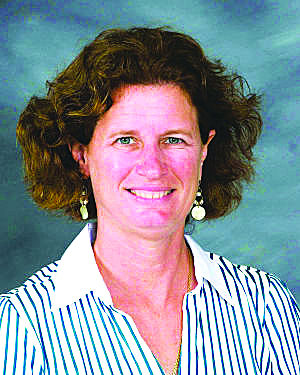“To leave behind what was in reality a hell, and immediately have good green earth revealed in more glory than most men ever see it, was one of the compensating privileges which make me feel that my suffering was worthwhile.” Clifford Beers (1876-1943).
The National Mental Health Month, through the efforts of the National Mental Health Association and the Jaycees, was established in 1949 to promote awareness and education about mental illness.
The theme for this year’s Mental Health Month is “Life with a Mental Illness,” with an invitation for all of those with a mental illness share their stories on social media of what their mental illness feels like.
Each year at this time, as I have done for many years, I write about this most important event with hope that others may also take part in whatever way they can.
After suffering years of mental illness, termed “insanity” in his day, Clifford Whittingham Beers recovered from his illness and went on to become the first advocate for the mentally ill in the United States, and founded the National Mental Health Association.
He penned the story of his mental illness, his many hospitalizations, and subsequent recovery, in the book “The Mind that Found Itself” in 1908.
According to the latest statistics from the National Mental Health Association and the National Institute on Mental Health, (of which the 2015 statistics are not available as of the date of this article), today one in four adults — approximately 61.5 million Americans — experience mental illness in a given year. One in 17 — about 13.6 million — live with a serious mental illness such as schizophrenia, major depression or bipolar disorder. Approximately 20 percent of youth ages 13 to 18 experience severe mental disorders in a given year. For ages 8-15, the estimate is 13 percent.
Yet, with all the progress made for treatment of the mentally ill, 60 percent of adults and 50 percent of youth with mental illness received no mental health service in the year. Additionally, untreated mental illness costs our nation approximately $200 billion yearly due to unemployment, unnecessary disability, substance abuse, and other factors. Even after these 67 some years of yearly Mental Health Month observations, the process of the general population being observant and aware has progressed very slowly; even most of the overall media we currently have does not run articles or air broadcasts of the observation, despite the ever-growing numbers of persons with mental illness in our community, state, and nation.
If we look at the picture of the plight of the mentally ill in Texas and our community, the figures become much more meaningful to us. The latest National Census Bureau estimates of Texas population is 25, 631,778. Cameron County and the City of Harlingen give us a population of 406,220 and 66,122 respectfully. Extrapolating the percentages of mentally ill would give us approximately 6 million in the state, 16,000 in the county and 1,530 in the city of Harlingen…those experiencing serious mental illness (classified as Schizophrenia, Major Depression, and Bipolar Illness).
The numbers are much higher if other mental illnesses are included, such as Anxiety Disorders, etc.
Texas ranks about average among all the states in respect to the percentage of persons with overall mental illness and severe mental illness: 14.66 percent and 17,78 percent respectively.
When one looks at Treatment for mental illness in the State and locally, in the amount of monies spent by the State of Texas, the outlook has remained bleak for many years. The cost to treat the mentally ill remains quite high, but the budget for mental health treatment in our state has actually decreased. In 1983 Texas was number 45 of the fifty states in monies provided per capita toward the mentally ill (around $10.00 per capita). In 2012 Texas was number 50 of the 50 states in monies provided per capita toward treatment of the mentally ill, and currently ranks at number 49.
The monies provided by the state mostly go into the penal system, with the state run treatment facilities divvying up the rest. The “trickle down” of these funds have had a serious impact on our community. Treatment access and treatment provided in Texas has been given “D’s and F’s” by national tracking agencies. I have often been approached by colleagues from other states asking: “Dr. Jones, tell me why is your state so backward with treatment for the Mentally Ill.” I want to tell them that I believe that most legislatures of this state are not really concerned about the mentally ill, but I always respond by saying, “Treatment providers and personnel are doing the very best with the tools they are given to do their jobs with.”
The therapies and treatments afforded patients and clients today in our community is representative of other hospitals and clinics of mental health throughout the nation; individual and group psychotherapy, psychotropic medication therapy, community living groups, occupational therapy, recreational therapy, physical medical care, work-study programs, dual-disorder education, etc. Yet, there is so much more that needs to be done, as many individuals and their families are in states of frustration…particularly with an adult family member with mental illness and/or an accompanying personality disorder and/or substance abuse disorder…often times all three together.
They often have extreme behavioral problems associated with their condition, that brings undue hardship on the family, yet the family often cannot intervene unless the individual becomes a danger to themselves or others. This is a major on-going problem.
The present state of mental health treatment in our community, the State, and Nation; even with its imperfections, offers a most professional, viable service to the millions of individuals with emotional problems and mental illness, and continues to improve (despite financial and staffing problems) in research, prevention and treatment efforts.
May is Mental Health Awareness Month. May we all increase our awareness of the individuals and families suffering from the effects of mental illness; to alleviate their pain and anguish, eliminate the myths and stigmas associated with mental illness, and promote treatment for the mentally ill.
Find out what you can do to aid in increasing awareness of mental illness. May you and your loved ones maintain concern and care for mental health as well as physical health.











